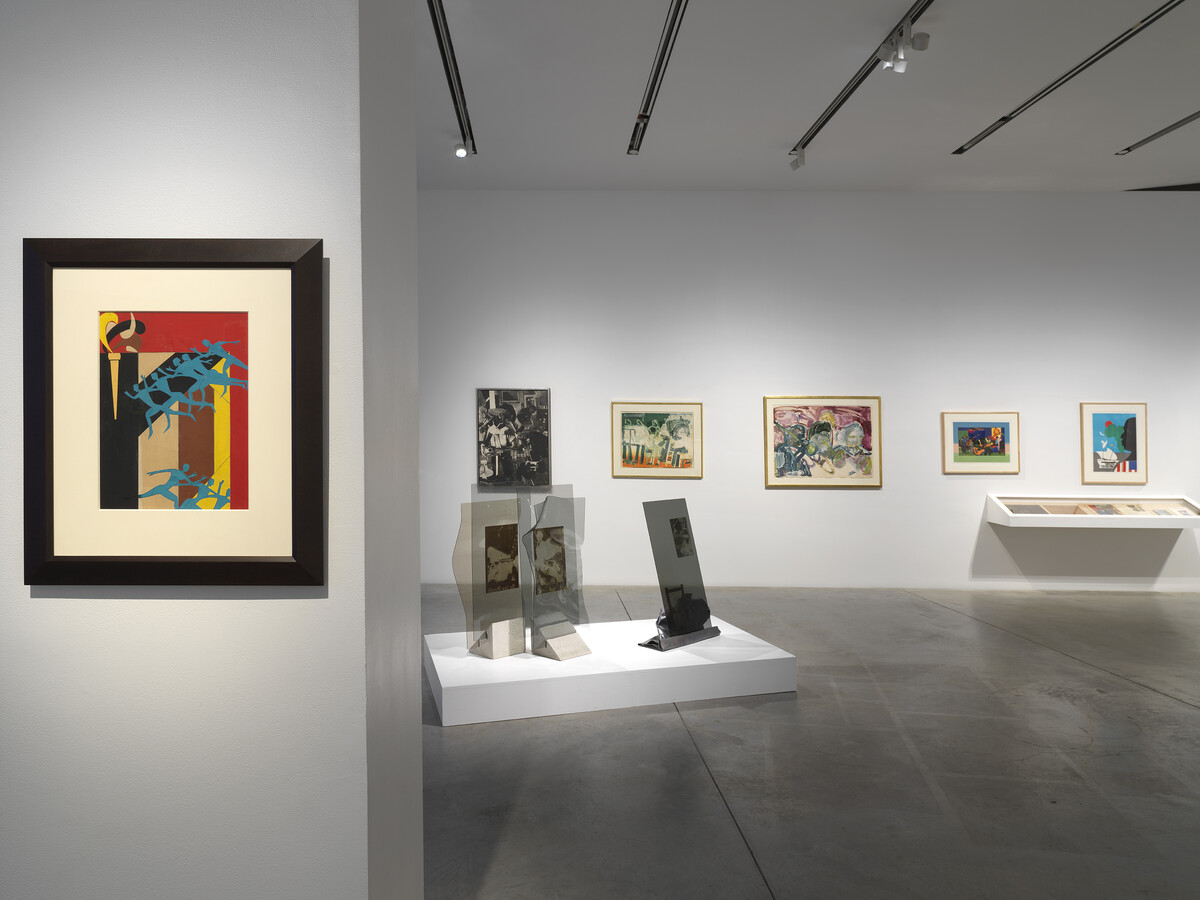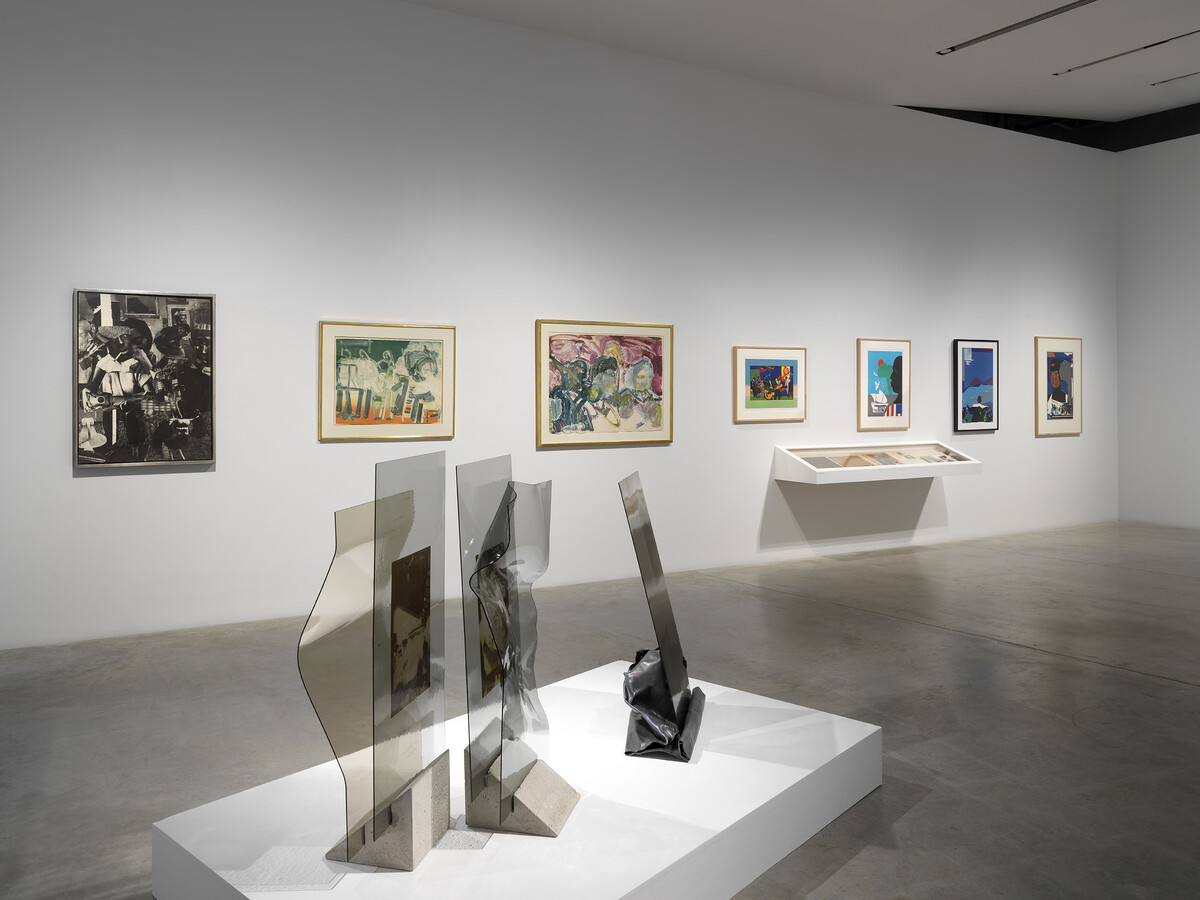
Two generations after the passing of American icon Romare Bearden in 1988, many of the challenges and profound injustices surrounding Black life in America remain, and Bearden’s art continues to be a beacon and guidepost for many.
For this major presentation, The New School’s Institute on Race, Power and Political Economy and the Vera List Center for Art and Politics, the Romare Bearden Foundation, and The Institute of Jazz Studies at Rutgers University Newark combine forces to examine the impact of Bearden’s work under three distinct lenses— the concepts and contents of his activist work, especially his prints; the role of music in both his practice at large and the activist projects; and the resonance of his oeuvre in contemporary art making. Entitled In Common: Romare Bearden and New Approaches to Art, Race & Economy, the multi-tier initiative includes a three-day symposium (November 30, December 1 & 2), a forthcoming publication, and this an exhibition, accompanied by an exhibition and symposium guide. Together, they consider Bearden’s legacy and the ongoing significance of his art to contemporary realities and circumstances facing Black and other communities of color.

The exhibition, In Common: New Approaches with Romare Bearden, anchors the symposium and program proceedings. Here, we highlight Bearden’s work as an educator, scholar, writer, songwriter, and social activist, by paying particular attention to his prints and collages. Drawing from the Romare Bearden Foundation’s collection and other collections, including The New School Art Collection, the exhibition presents a selection of works where Bearden explored the Black experience, often taking inspiration from history, literature, the Bible, jazz, and African American communities. It is complemented by six leading and emerging contemporary artists–Black Quantum Futurism, Kahlil Robert Irving, Lorraine O’Grady, Hank Willis Thomas, Mickalene Thomas, and Charisse Pearlina Weston–whose work and values resonate with those of Bearden and contribute to a multi-generational dialogue on the political agency of art.
Print-making has always been considered at the forefront of political activism. Bearden used the medium for this purpose, as well as to explore his experimental impulses and to make his statements available to broader audiences. The six artists invited to join the Bearden project are building on this understanding of the political efficacy of printmaking as it relates to Bearden and are pushing, subverting, expanding, and playing with contemporary applications and opportunities of “print” and image-making. As they work through an explosive range of print techniques involving ink, glue, glass, paper, and textiles, and expand on old and new technologies from gelatin silver photography to lenticular processes, including installation, print-based sculptural forms, and musical performance, Black Quantum Futurism, Kahlil Robert Irving, Lorraine O’Grady, Hank Willis Thomas, Mickalene Thomas, and Charisse Pearlina Weston extend the legacy of Romare Bearden into the future.
